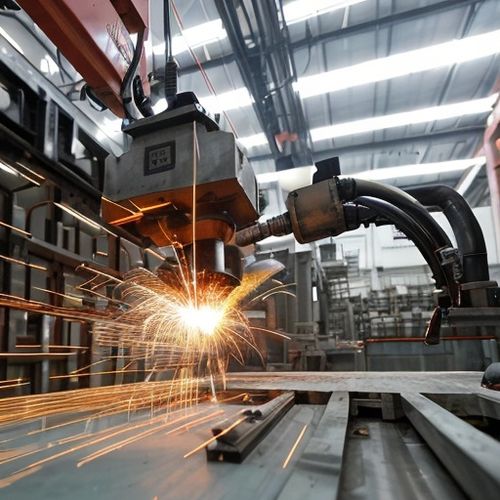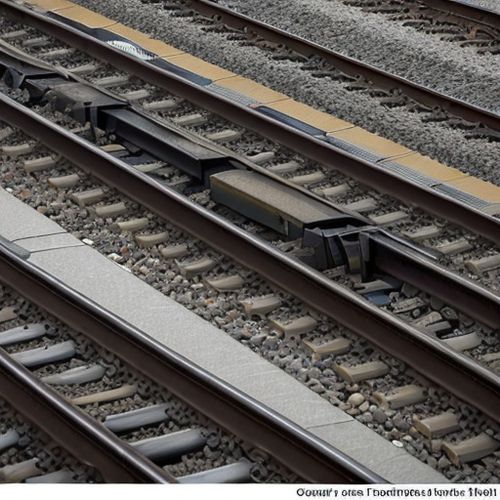The relentless expansion of global rail networks has brought with it an often-overlooked challenge: metal fatigue in railway tracks. This insidious phenomenon creeps into the very bones of our transportation infrastructure, compromising safety and reliability in ways that escape casual observation. Unlike sudden catastrophic failures that dominate headlines, metal fatigue works its destructive magic gradually, through countless cycles of stress that eventually overwhelm the material's endurance.
At its core, metal fatigue represents the progressive structural damage that occurs when rail tracks undergo repeated loading and unloading. Each passing train exerts forces that, while individually insignificant, accumulate over time to create microscopic cracks. These tiny fissures grow with each additional stress cycle, eventually reaching critical proportions that can lead to complete rail failure. The consequences range from costly service disruptions to catastrophic derailments with potential loss of life.
The science behind rail fatigue reveals a complex interplay of material properties and operational factors. Modern rails typically consist of high-carbon steel, chosen for its balance of hardness and ductility. However, even this robust material succumbs to the relentless punishment of heavy axle loads traveling at increasing speeds. The wheel-rail interface creates concentrated stress points that initiate fatigue cracks, particularly in curved sections of track where lateral forces compound the problem.
Environmental conditions dramatically accelerate the fatigue process. Temperature fluctuations cause expansion and contraction that add to the stress cycles, while moisture and contaminants promote corrosion that weakens the metal's structure. In coastal regions, salt spray proves particularly destructive, while in colder climates, the combination of ice and de-icing chemicals creates a similarly hostile environment for rail longevity.
Detection and monitoring have become critical weapons in the battle against rail fatigue. Advanced technologies now allow maintenance crews to identify problem areas before they reach critical failure points. Ultrasonic testing sends high-frequency sound waves through the rail to detect internal flaws invisible to the naked eye. Eddy current testing uses electromagnetic induction to find surface cracks, while visual inspection remains vital for spotting more obvious signs of distress.
The railway industry has developed sophisticated maintenance strategies to combat metal fatigue. These include regular grinding to remove surface defects before they can propagate deeper into the rail head, and thermal stress relief processes that help redistribute internal stresses. In some cases, targeted replacement of high-risk sections proves more cost-effective than continuous repair, particularly in heavily trafficked corridors where downtime carries significant economic consequences.
Material science continues to push the boundaries of rail longevity. Researchers are developing new steel alloys with enhanced fatigue resistance, incorporating elements like chromium and vanadium to improve performance. Heat treatment processes have become more precise, allowing for better control of the metal's microstructure. Some experimental approaches even explore self-healing materials that could potentially repair minor fatigue damage autonomously.
The human factor remains crucial in managing rail fatigue. Experienced track inspectors develop an almost intuitive sense for potential trouble spots, complementing technological solutions with hands-on expertise. Training programs emphasize pattern recognition and risk assessment, equipping personnel to make informed decisions about when to repair, reinforce, or replace aging track sections.
As rail networks face increasing demands from both passenger and freight traffic, the challenge of metal fatigue will only intensify. Higher speeds and heavier loads create more severe stress conditions, while the push for cost efficiency places pressure on maintenance budgets. The industry must balance these competing demands while ensuring that safety remains the paramount concern. This requires not just better materials and smarter monitoring, but a fundamental shift in how we approach infrastructure lifecycle management.
The economic implications of rail fatigue extend far beyond simple maintenance costs. Unexpected failures disrupt supply chains, delay passenger services, and necessitate expensive emergency repairs. The cumulative impact across a national rail network can amount to billions in lost productivity and additional operating expenses. Conversely, strategic investment in fatigue mitigation yields substantial returns through improved reliability and reduced unplanned outages.
Looking ahead, the integration of predictive analytics promises to revolutionize fatigue management. By combining real-time monitoring data with advanced modeling techniques, rail operators can anticipate where and when fatigue-related failures are most likely to occur. This shift from reactive to proactive maintenance represents the next frontier in rail infrastructure management, potentially extending asset life while simultaneously improving safety margins.
The silent progression of metal fatigue in railway tracks serves as a powerful metaphor for the challenges facing modern infrastructure systems. Like many aging systems, the damage accumulates gradually, often escaping notice until it's nearly too late. Addressing this issue requires sustained attention, adequate resources, and respect for the physical limits of materials that form the backbone of our transportation networks. As we continue to push rail technology to new limits, understanding and mitigating metal fatigue will remain essential to ensuring safe, reliable service for decades to come.

By Megan Clark/Apr 28, 2025

By Daniel Scott/Apr 28, 2025

By Christopher Harris/Apr 28, 2025

By Daniel Scott/Apr 28, 2025

By Megan Clark/Apr 28, 2025

By Grace Cox/Apr 28, 2025

By James Moore/Apr 28, 2025

By Rebecca Stewart/Apr 28, 2025

By Jessica Lee/Apr 28, 2025

By Laura Wilson/Apr 28, 2025

By Emily Johnson/Apr 28, 2025

By John Smith/Apr 28, 2025

By Thomas Roberts/Apr 28, 2025

By Emma Thompson/Apr 28, 2025

By John Smith/Apr 28, 2025

By David Anderson/Apr 28, 2025

By Olivia Reed/Apr 28, 2025

By Christopher Harris/Apr 28, 2025

By Emily Johnson/Apr 28, 2025

By Grace Cox/Apr 28, 2025